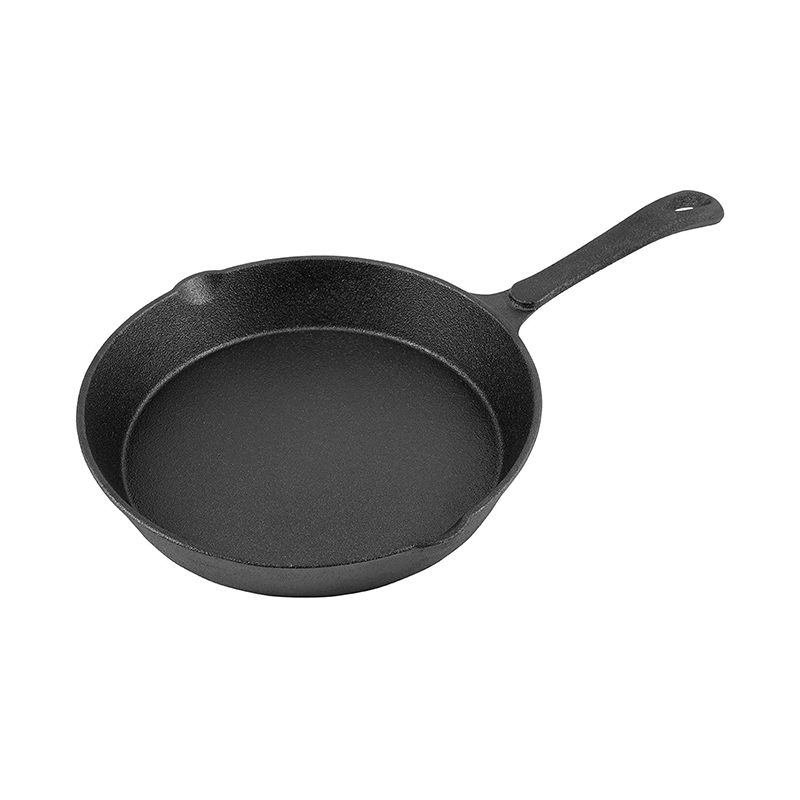A cast-iron frying pan with a lid is a staple in any kitchen, offering remarkable versatility that spans stovetop to oven. By mastering a few core techniques, you can transform simple ingredients into flavorful meals with this durable cookware. This guide explores the art of searing, simmering, and baking, along with essential care tips to keep your pan performing well for years.

Achieving a Golden Sear
Searing locks in juices and creates a rich, caramelized exterior that elevates meats, poultry, and even hearty vegetables. The key lies in proper heat management and food preparation.
Preheating the Pan Correctly
Place the pan on medium heat and let it warm gradually for several minutes. Rushing this step can lead to uneven heating. To test if it’s ready, sprinkle a few drops of water—they should dance across the surface and evaporate quickly. For enameled cast iron, start with medium-low heat to prevent damage to the coating, then adjust as needed.
Preparing Ingredients for Browning
Pat the surface of meats or vegetables completely dry with paper towels. Moisture inhibits browning, so taking this extra step ensures a crisp crust. For thicker cuts, let them sit at room temperature for 15-20 minutes before cooking to promote even searing.
Executing the Sear
Add a thin layer of high-smoke-point oil, such as canola or avocado oil, and swirl to coat the pan. Place the food in the pan and resist the urge to move it immediately. Let it cook undisturbed until a deep golden crust forms—this usually takes 3-4 minutes—and the food releases easily from the surface. Flip once and repeat on the other side for consistent browning.
Simmering with Moisture and Flavor
The lid of a cast-iron pan transforms it into an excellent tool for simmering and braising, trapping steam to create tender, flavorful dishes.
Building a Flavor Base
Searing often serves as the first step in simmering recipes. After removing the seared food, pour a liquid like broth, wine, or tomato sauce into the hot pan. Use a wooden spoon to scrape up the browned bits (called fond) from the bottom—these are packed with flavor and will enrich your sauce or broth.
Mastering Gentle Simmering
Return the seared food to the pan, add any additional ingredients like vegetables or herbs, and cover with the lid. Reduce the heat to low to maintain a gentle simmer—small bubbles should rise to the surface without boiling vigorously. The tight-fitting lid traps steam, keeping the environment moist and ensuring food cooks evenly while tenderizing tougher cuts over time.
Baking with Consistent Heat
Cast iron’s ability to retain and distribute heat evenly makes it ideal for baking, producing dishes with crispy exteriors and moist interiors.
Creating Crispy Baked Goods
For breads or pizzas, preheat the empty pan and lid in the oven to mimic a baking stone. Once heated, place the dough directly on the pan—the hot surface immediately crisps the bottom. Cover with the lid during the initial baking phase to trap steam, which helps develop a shiny, crackly crust on breads.
Baking Savory and Sweet Dishes
The pan’s even heat works well for a variety of baked dishes, from cornbread and deep-dish pancakes to fruit cobblers and skillet cookies. Preheat the pan with a light coating of oil or butter before adding batter to ensure easy release and a golden edge. Monitor baking time closely, as cast iron retains heat well and can cause over-browning if left unattended.



